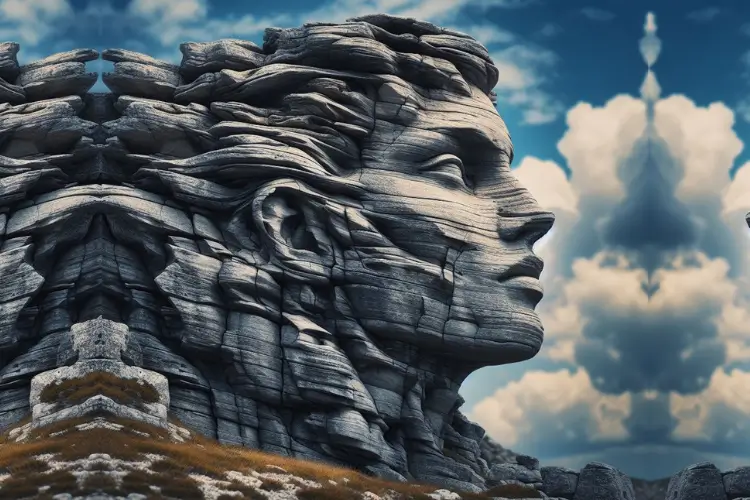Do metamorphic rocks look like the pre-existing rock from which they form? Metamorphic rocks can look like pre-existing rocks sometimes. They do not always look like the pre-existing rock as they change form.
Are Metamorphic Rocks Made from Pre-Existing Rocks?
Yes, metamorphic rocks are made from pre-existing rocks as they form when the pre-existing rocks face high temperature and pressure to change into a new form.
The rock temperature can reach 150 to 200 degrees to change it.
The pressure should be more than 100 megapascals for the metamorphic process to start.
What Type of Rock that Form from the Transformation of Pre-existing Rocks?
Different types of rocks form from the transformation of pre-existing rocks.
When the rock transforms due to melting at a high temperature, it makes igneous rock.
When a moderate temperature elevation and a high pressure transform the pre-existing rock, it forms the metamorphic rock.
A hot mineral fluid can also interact with the pre-existing rock to make a new type of metamorphic rock.
Are Metamorphic Rocks Formed from the Same Original Features as Sedimentary Rocks?
Yes, metamorphic rocks can be formed from the same important depositional features as sedimentary rocks.
Heat and pressure can cause the original features of sedimentary rocks, such as layering and fossil remnants, to become altered and transformed into metamorphic rocks with new characteristics and structures.
Are Metamorphic Rocks Formed from Deformation Experienced by Rocks Before an Earthquake?
Metamorphic rocks are not typically formed from the type of deformation before earthquake.
Metamorphic rocks are created from intense heat and pressure deep within the Earth’s crust, causing existing rocks to undergo a transformation into a new type of rock with unique characteristics.
How Do Metamorphic Rocks Change from Their Original Form?
Metamorphic rocks change their original form due to high temperature and pressure.
They may also change structure when a hot mineral-rich fluid combines with the original rock.
Rock changes its original form by combining many natural factors, including heat, high pressure, and mineral-rich fluid.
What are Metamorphic Rocks?
Metamorphic rocks are different types of rocks that form due to metamorphism. Rock changes due to high pressure, high temperature, and mineral-rich fluid. It makes a new rock with different physical and chemical properties.
You can find these rocks near the tectonic plates because these tectonic plates exert high pressure when they collide.
These rocks start their journey in the deep parts of the earth in a different form.
When they reach the colliding ends of the tectonic plates, they change the structure by combining many minerals with them.
What Is the Process of Metamorphism?
Most people confuse metamorphic rocks with igneous rocks because both of them change form.
Metamorphic rocks are different because they do not melt during metamorphism.
Igneous rocks face thousands of degrees celsius to melt.
When the igneous rocks melt, they combine with the other minerals to form a new igneous rock.
Metamorphic rocks do not melt as they get dense due to the pressure of the tectonic plates.
They do not face a melting temperature.
Pressure is responsible for most work in the metamorphosis process.
You will find two processes that lead to the metamorphic rock formation.
Some minerals change molecular arrangements to form a new type of rock.
Mineral-rick fluid can also enter the rocks to change them through the mineral deposit process.
You will find these rocks in squished or folded form due to pressure effects.
It is essential to know that the pressure and temperature never melt the metamorphic rocks.
What Are the Common Metamorphic Rocks?
Marble is the most famous metamorphic rock.
It forms from the calcite and dolomite minerals.
People use it as a construction material.
Quartzite is another famous metamorphic rock.
Quartzite consists of quartz-rich sandstone.
This sandstone undergoes high pressure and high temperature to form the Quartzite.
You can make roofing and stair steps with Quartzite because of its durability.
Phyllite is also a metamorphic rock.
When nature puts high pressure on the silica to form a sheet structure, it makes metamorphic rocks.
You can use it for decorating your home.
Foliated Metamorphic Rocks
Foliation means stripe formations on the rock as grains of some minerals arrange in a parallel line at the rock.
Foliation is due to the pressure in the rock alignment.
Minerals can align when they undergo high pressure.
Pressure will force to rock to become like a sheet.
As more sheets from on one sheet, they show a banded appearance.
You can identify the direction of the pressure with the foliation.
High pressure will make a sheet in the perpendicular direction. Granite is a foliated rock.
People like to use it to make kitchen slabs due to its beautiful patterns.
Non-Foliated Metamorphic Rocks
Non-foliated rocks do not have bands of minerals.
It is due to the different structures of the pre-existing rock.
If the rock is not in the form of a sheet, high pressure will not align the minerals in the rock.
A hot rock can also attach to the pre-existing rock to change its form.
This process will make a non-foliated metamorphic rock.

